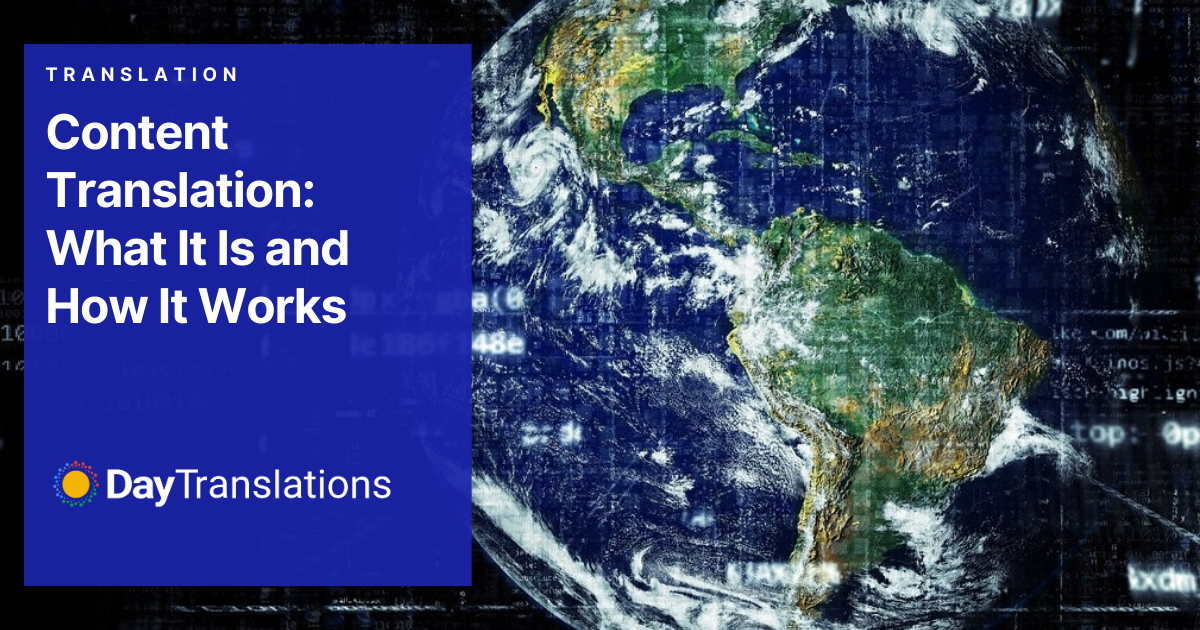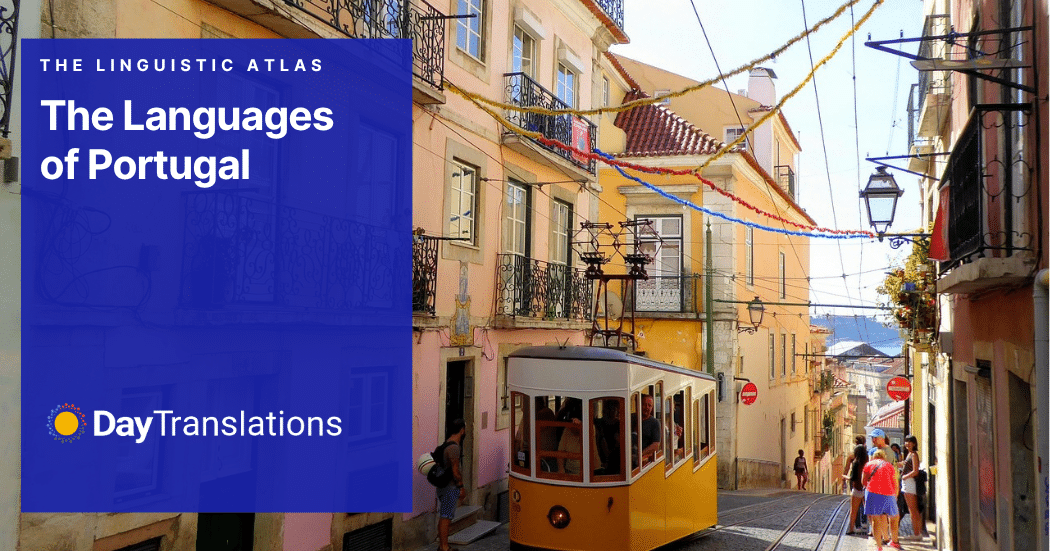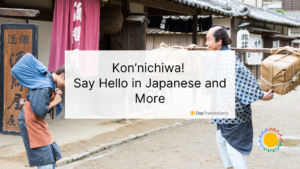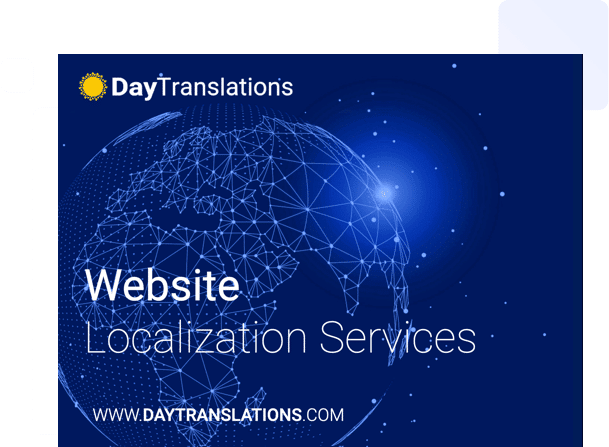Content translation is a multi-step process that involves translating text into another language to access a new target audience or market. It’s not just a translation of words but an appreciation of cultural sensitivities, attitudes, and messages within the target language.
Anyone who wants to grow their business needs to translate their content. It’s a vital step to expanding your operations and establishing trust with international customers.
In this article, we’ll explore the complexities of content translation, from how it’s different from localization to the process, what pitfalls to avoid, and how Day Translations can help.
What Is Content Translation?
Content translation adapts your materials to a specific audience that speaks a different language or lives elsewhere. This includes marketing, website, and branded content, which must be translated well to keep the original meaning and tone.
You’ll employ this type of translation as part of your overall international marketing strategy to recapture the impact on your original market to new audiences. Careful content translation ensures your target audience can resonate with your message and see the value of your business.
Why Content Translation Matters for Global Brands
CSA Research found that 40% of customers won’t even buy products from websites that aren’t in their native language.
And why should they, if the content isn’t tailored to them?
Publishing content in various languages helps more customers gain confidence in your brand, thanks to a wider audience reach and increased customer engagement. The easier your website is to use, the more likely customers are to make a purchase.
High-quality human-translated content tells your target market you are knowledgeable in your specialization and have a first-rate product or service. That’s because machine translations can’t include cultural sensitivities or use improper wording.
The key is to make your audience work as little as possible. Translate your content accurately into their language to make it accessible and clear.
Localizing your content allows you to relate strongly to your audience through sensitivity to cultural references and contexts. Translating content also expands your reach through SEO. Search engines like Google love relevant content, so make it easy for their algorithms by providing content suited to multiple countries.
Content translation also keeps your site compliant with local regulations and requirements. It reduces legal risk by ensuring that disclaimers and terms comply with regional laws – crucial for specialized and technical fields like healthcare, law, and finance.
Case Study: Coca-Cola
Coca-Cola did not always have the global brand popularity that it does today. When it was originally established in 1886, Coca-Cola had an uphill battle with its product having a strange color and peculiar taste, which was different from anything else that was on the market.
International consumers had to be convinced of the distinctive taste, and expansions into new markets were once met with opposition due to the potential for health issues and environmental damage.
One of the biggest obstacles for the company was doing business in China. According to Statista, 1.184 billion people speak Mandarin, so this was a huge market to push into, meaning content translation needed to be done correctly.
Both the culture and politics are renowned for being rigid, but Coca-Cola tried to make customers feel at home. The company labeled its bottles with the names of regions in their local language and popular characters to increase audience connection.
Research from Advances in Economics, Management, and Political Sciences showed how the company adapted to cultural norms by releasing flavors appealing to regional customers, like lychee black and peach oolong. The spread of the population outside of the major cities also influenced content translation to appeal to smaller cities where more people lived.
How Content Translation Differs From Localization
Translation refers to converting text, while localization considers cultural adaptations, including regional measurements and relevant symbols and imagery. Content translation also encompasses localization to more easily reach audiences and be aware of their requirements.
Content translation entails the process of translating text from a source language to a target language. The goal is to successfully convey the original meaning of the text while following grammar, terminology, and style.
Localization is the process of adapting content for a target audience with respect to cultural, linguistic, and technical differences. It gives the reader the impression that the content was written originally in their language. Localization is more than the translation of the text, such as date and time format changes, legal requirements, and culturally appropriate graphics.
Localization builds trust with your audience, often leading to increased sales. Research from Translating and the Computer found that mega companies like Microsoft and IBM make more than 60% of their revenue from sales of localized products.
Here’s an overview of the main differences between content localization and translation:
| Feature | Content Translation | Localization |
| Main Focus | Accuracy and understanding for native audiences | Cultural adaptation and relevance based on regional differences |
| Process | Conversion of text to create fluid and natural content | Broader awareness of local norms and customs |
| Aim | Communicate the original message to a new market | Integrate into the target audience’s cultural expectations |
The Content Translation Process
Effective content translation requires a strategy. You need to know your goals, audience, and messaging format. Translation should be built into your marketing from the ground up with experienced translators.
Here are the main steps in a content translation workflow:
Planning and Content Audit
Having set clear objectives will help you understand what to translate and why. Content audits provide you with a list of what you already have and help you decide what has to be repurposed for new markets. Your objectives should include the identification of key metrics to measure your performance and keep track of the success of your translation content.
Start by translating the key webpages that you know will have high traffic. These include your home page, landing pages, and product pages. From there, you can move on to blog posts, social media, marketing emails, support pages, and lead magnets.
Market and Audience Research
You need to know everything about your customers to translate content that will resonate with them effectively. Translating content you already have in English may not connect with global audiences in every market. Use data-driven market research to understand what your customers want, why they want it, and how competitors are already succeeding in the region.
For example, Switzerland has four official national languages, but German is the most widely spoken, so content translation in this language should be your top priority if you want to move into this market.
Translation Execution
The right individuals are needed to help make your plan a reality. Clearly established steps about what to translate, who is doing it at each stage, and when the material needs to be translated will ensure a seamless workflow. They need to have vast experience in the industry they translate for and be aware of cultural nuances in the target region.
Editing and Quality Assurance
Once content has been initially translated, proofreaders and editors must review it to ensure accuracy and relevance. They are responsible for catching typos and grammatical errors and ensuring the translation is compatible with the design and layout.
Publishing and Monitoring
Local SEO helps promote your content and ensure the right people see it. This means doing keyword research to write content that is findable and relevant to your target audience before publishing. Your content must be measured for success, and changes should be made based on performance and internal workflows.
Key Challenges in Content Translation
Content translation has its own set of challenges, including brand consistency, SEO adaptation, cultural references, and achieving a smooth workflow. Awareness of these hurdles helps develop a content translation strategy, especially when scaling translation to more markets.
More target languages mean a higher chance of miscommunication and errors, so let’s look at some of these challenges more closely:
Maintaining Brand Voice Consistently Across Markets
Content translation is often a delicate balancing act. You want to be consistent across your markets in your messaging, but changes are often necessary to connect with different target audiences. Literal translations can miss cultural nuances and prevent connecting with new markets. Transcreation and understanding cultural norms help bridge this gap.
SEO and Keyword Adaptation Without Losing Search Relevance
People use different keywords in different markets, so one strategy won’t work with every market. This is even the case when audiences speak the same language.
US/UK spelling variants and colloquialisms demand that the SEO approach adapt to the market. For example, people want to rent an “apartment” in the US but may search for a “flat” in the UK, so SEO needs to be tailored accordingly.
Good lines of communication among SEO specialists enable you to have an integrated and relevant strategy that works with each audience.
Handling Cultural References and Imagery
A cultural expert in the target market will allow for faster and more precise content translation. Translating your source content to accommodate different audiences requires knowledge of how things like color and symbols can strengthen or dilute a message.
For example, in Western cultures, red represents love, danger, and excitement, while in Eastern cultures, red signifies good luck, celebration, and prosperity.
Workflow and Collaboration Bottlenecks
Using tools compatible with your workflow will help prevent disruptions and increase efficiency. Several considerations are involved in identifying where bottlenecks can occur, including budget, unclear lines of communication, and unrealistic deadlines.
Ensure you have quality assurance (QA) workflows to catch errors and choose the most suitable methodology for your content.
Tools and Technology for Efficient Content Translation
An efficient content translation process can become easier with the right tools and technology. The following are some of the options you have for implementing an efficient content translation process:
- Translation Management Systems (TMS): These comprehensive platforms allow you to manage the entire translation process from project management to automated workflows and integration with translation tools.
- Computer-Assisted Translation (CAT) Tools: These tools improve efficiency with translation memories (TM), style guides, and glossaries to ensure consistency across materials. Human translators have to operate CAT tools as they are not completely automated.
- Machine Translation (MT) Tools: MT tools are computer applications that use AI or algorithms to perform text translation without human involvement. MT tools are not culturally sensitive and must be applied with human post-editing to refine the text.
- Content Management System (CMS) Integration: Translation tools can be integrated through CMS and marketing platforms to automate tasks and ease workflows.
Measuring Success in Content Translation
Measuring the results of content translation allows you to see if your strategy is working and if any adjustments need to be made. Some of the key metrics to evaluate your content translation success include:
- Organic Traffic: Translation of content into another language boosts your SEO within that region. Organic traffic is promoted when your target audience uses their native language for searching. That means incorporating relevant keywords will improve this metric.
- Engagement Rates: Tracking where and how long your audience spends time on your website will guide your content priorities. Your engagement rates are also a primary way to determine the relevance of your content to your target audience.
- Lead Conversions: This represents how many prospective customers turn into paying customers. Understanding how to guide leads through the sales funnel effectively will lead to more purchases and requires building trust through content translation.
- Brand Sentiment: Knowing your audience’s thoughts about your content is crucial for creating an effective content translation strategy. Customers want to read content in their native language, and poor translation can lead to a negative brand experience. Listening to reviews and social media posts informs your response to reaching new markets.
Common Mistakes to Avoid
Content translation comes with its common pitfalls to be aware of. Some of the main mistakes to avoid so that you get content translation right the first time are as follows:
- Literal Translation: Word-for-word translation may prevent you from connecting with the target audience appropriately. While it may be used in some contexts, like in accordance with legal regulations, localization helps you create relevant and valuable content for a new market.
- Forgetting Local SEO: Keywords aren’t global and don’t work across all nations and regions. Applying the same SEO strategy in different markets will mean you won’t be getting organic traffic since you’re not targeting relevant keywords.
- Skipping Cultural Checks: You will lose your target audience if you aren’t culturally aware and sensitive. Employing culturally savvy translators who understand the market’s idiosyncrasies will help you avoid killing your brand reputation.
- Underestimating Review Cycles: To attain a smooth and effective workflow, it’s essential to incorporate reviews and feedback regularly. After a project is completed, every stage of your content translation process must be assessed to determine gaps in your workflow.
When to Consider Professional Help
Translating into new markets requires a good translator, particularly with high-risk marketing campaigns, legal disclaimers, and regulated markets. Poor content translation can affect your brand image and create costly legal issues.
If you don’t understand the cultural nuances of your target audience, you can risk alienating them and losing customers. Failing to translate specialized terminology or misinterpreting regional laws effectively can damage your reputation and create unnecessary expenses.
Staying on top of your content translation workflow can be complex, but Day Translations can help create a smooth process as you expand your global reach. Our global translators are experts in various industries and deliver your content to a high standard. Get a quote today to leverage the potential of content translation and reach a whole new audience.














Sorry, the comment form is closed at this time.